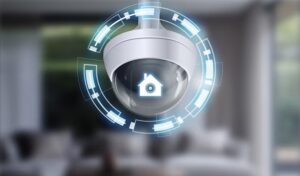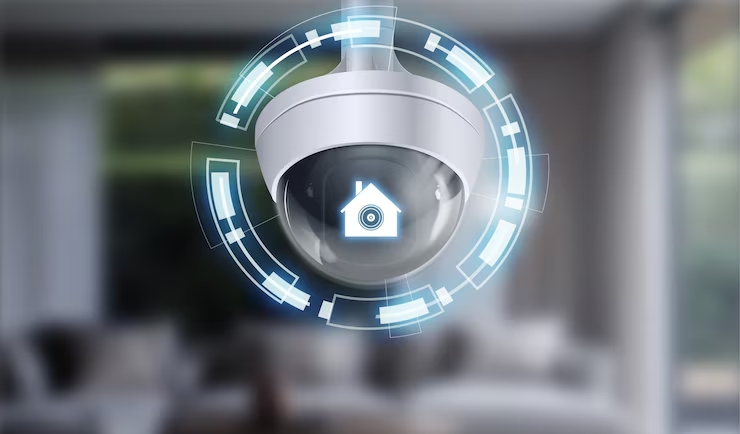
In today’s connected world, protecting homes and businesses goes beyond just locking doors. Video surveillance systems have become an essential part of modern security setups. One of the most reliable and flexible options available is IP security cameras—short for Internet Protocol cameras. These systems offer more than just recording video; they provide clear imaging, remote access, and integration with other technologies.
Suppose you’re looking to upgrade or install a new surveillance setup. In that case, this guide breaks down what you need to know about IP security cameras, how they compare to older systems, and where specialized types like dome security cameras, PTZ security cameras, and PoE Security Cameras come into play.
What Are IP Security Cameras?
IP security cameras are digital video cameras that transmit data over a network. Unlike analog CCTV systems, which use coaxial cables and DVRs, IP cameras use your local network and store footage on Network Video Recorders (NVRs) or cloud platforms.
These systems are ideal for real-time monitoring and playback. You can access live feeds from your smartphone, tablet, or computer—whether you’re across the street or across the country. Because the video is already digital, it’s easier to store, analyze, and share compared to traditional systems.
How IP Cameras Compare to Analog Systems
| Feature | IP Security Cameras | Analog Cameras |
| Image Resolution | Up to 4K or higher | Limited, often lower than 1080p |
| Installation | Easier with PoE | Requires more cabling |
| Remote Access | Available via apps and browsers | Limited or requires extra setup |
| Scalability | Simple to expand | Less flexible |
| Integration Options | Smart alerts, motion zones | Basic features |
The advantages are clear. IP cameras deliver sharper video, more detailed night vision, and better zoom capabilities. They also integrate more seamlessly into smart security ecosystems.
Key Benefits of IP Security Cameras
- High-Definition Footage:
The clarity offered by IP cameras helps identify faces, license plates, and other important details—crucial in the event of theft or suspicious activity. - Remote Viewing:
Whether you’re checking in on a business after hours or making sure your kids got home safe, remote access allows full control from your devices. - Intelligent Features:
Many IP cameras include features like motion detection, facial recognition, and real-time alerts. Some even allow voice interaction or respond to specific triggers. - Flexible Storage Options:
Users can choose between local NVR storage or secure cloud backups. Either way, footage is easily accessible and often protected with encryption. - Scalable System Design:
IP systems grow with your needs. Adding a new camera is usually as simple as plugging it into your existing network.
Exploring Different Types of IP Cameras
IP cameras come in different shapes and functionalities. Each serves a specific need based on environment, field of view, and usage. Let’s look at some commonly used models.
Dome Security Cameras
Known for their compact, discreet design, dome security cameras are often mounted on ceilings or walls in both residential and commercial environments. Their dome-shaped casing makes it difficult to see where the lens is pointing, which adds a layer of unpredictability for anyone under surveillance.
These cameras are also well-protected against vandalism and environmental damage, making them ideal for high-traffic areas like entrances, parking garages, and offices.
PTZ Security Cameras
PTZ security cameras—short for pan, tilt, and zoom—offer more control than fixed-position models. You can remotely adjust their viewing angle or zoom in on specific targets. These cameras are especially useful for monitoring wide open areas like warehouses, construction sites, or parking lots.
With PTZ cameras, users can automate patrol patterns or manually track movement across large spaces. Some advanced models even auto-track motion once detected.
PoE Security Cameras
PoE Security Cameras (Power over Ethernet) simplify installation by using a single Ethernet cable for both power and data transmission. This reduces the number of cables needed, lowers installation costs, and ensures a more reliable connection compared to Wi-Fi setups.
These cameras are perfect for those who want a clean, efficient setup without sacrificing video quality. They’re also easier to install in places without nearby electrical outlets.
Installation Tips for IP Security Cameras
While IP camera systems are often easier to install than analog setups, planning matters. Here are some tips for a successful installation:
- Choose key coverage areas like entrances, driveways, and blind spots.
- Consider lighting conditions—some IP cameras offer better night vision or HDR features.
- Secure your network to protect your footage and privacy.
- Label cables and ports for easy maintenance or expansion later.
- Use weatherproof cameras outdoors to avoid damage from rain or snow.
Whether you install the system yourself or hire a professional, good placement and configuration are essential for performance.
Real-Life Uses of IP Security Cameras
The versatility of IP cameras makes them suitable for a wide range of applications:
- Homeowners use them for porch security, garage monitoring, or baby monitoring.
- Small businesses rely on them to watch over inventory, cash registers, and entry points.
- Schools and campuses use IP systems for hallway monitoring and safety compliance.
- Construction sites benefit from PTZ cameras for real-time project tracking.
The key takeaway is that IP security cameras can be adapted to nearly any environment or need.
Final Thoughts
IP security cameras offer a modern, flexible, and powerful way to secure your property. Whether you’re watching your home, managing a small business, or overseeing a large commercial site, these systems provide clear advantages in image quality, accessibility, and functionality.
By understanding the different types—like dome security cameras, PTZ security cameras, and PoE Security Cameras—you can build a system that fits your exact needs. For those looking for reliable equipment, backstreet-surveillance offers a variety of solutions tailored to real-world security challenges.
With the right IP camera setup, you don’t just get footage—you get peace of mind.






